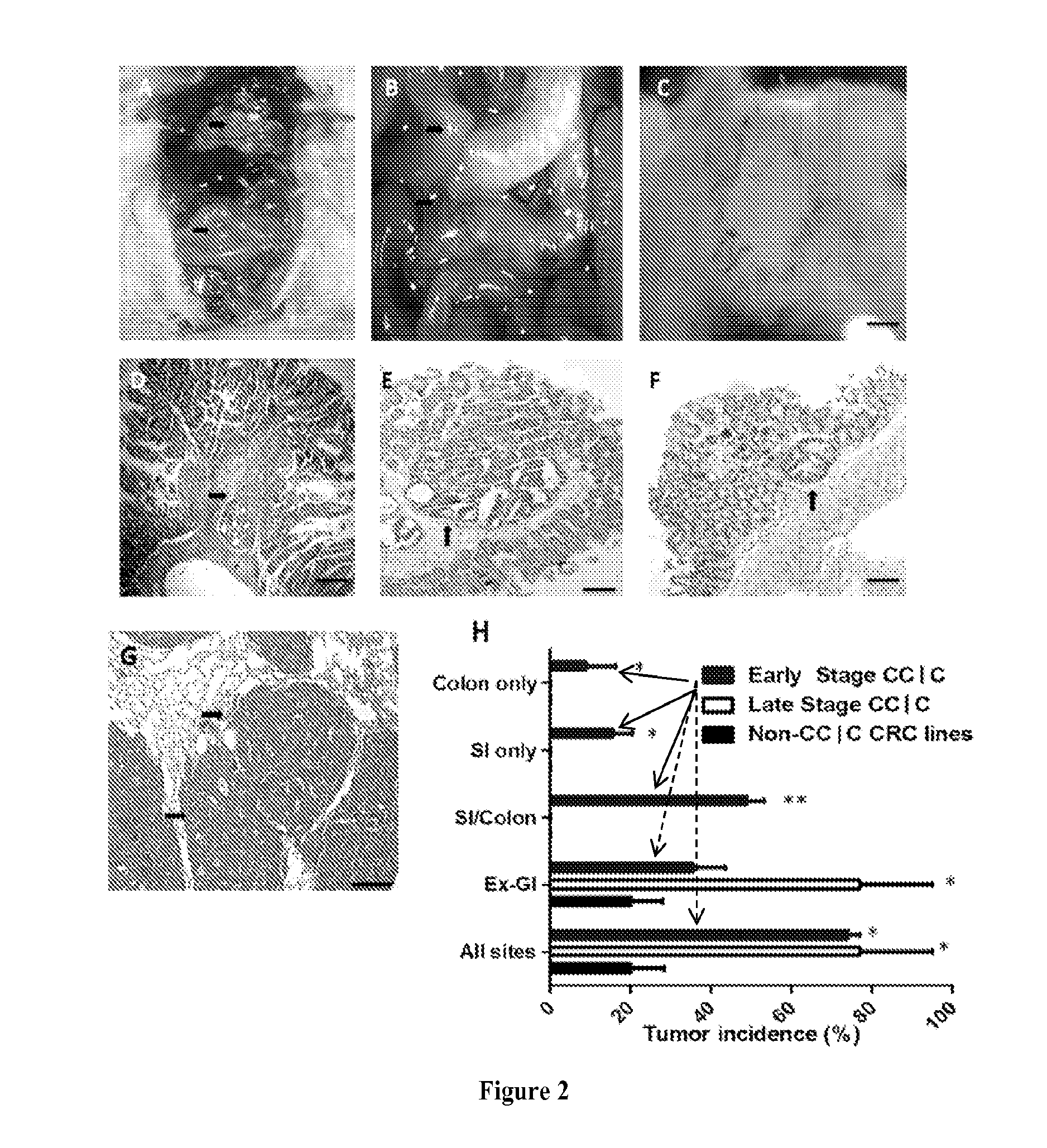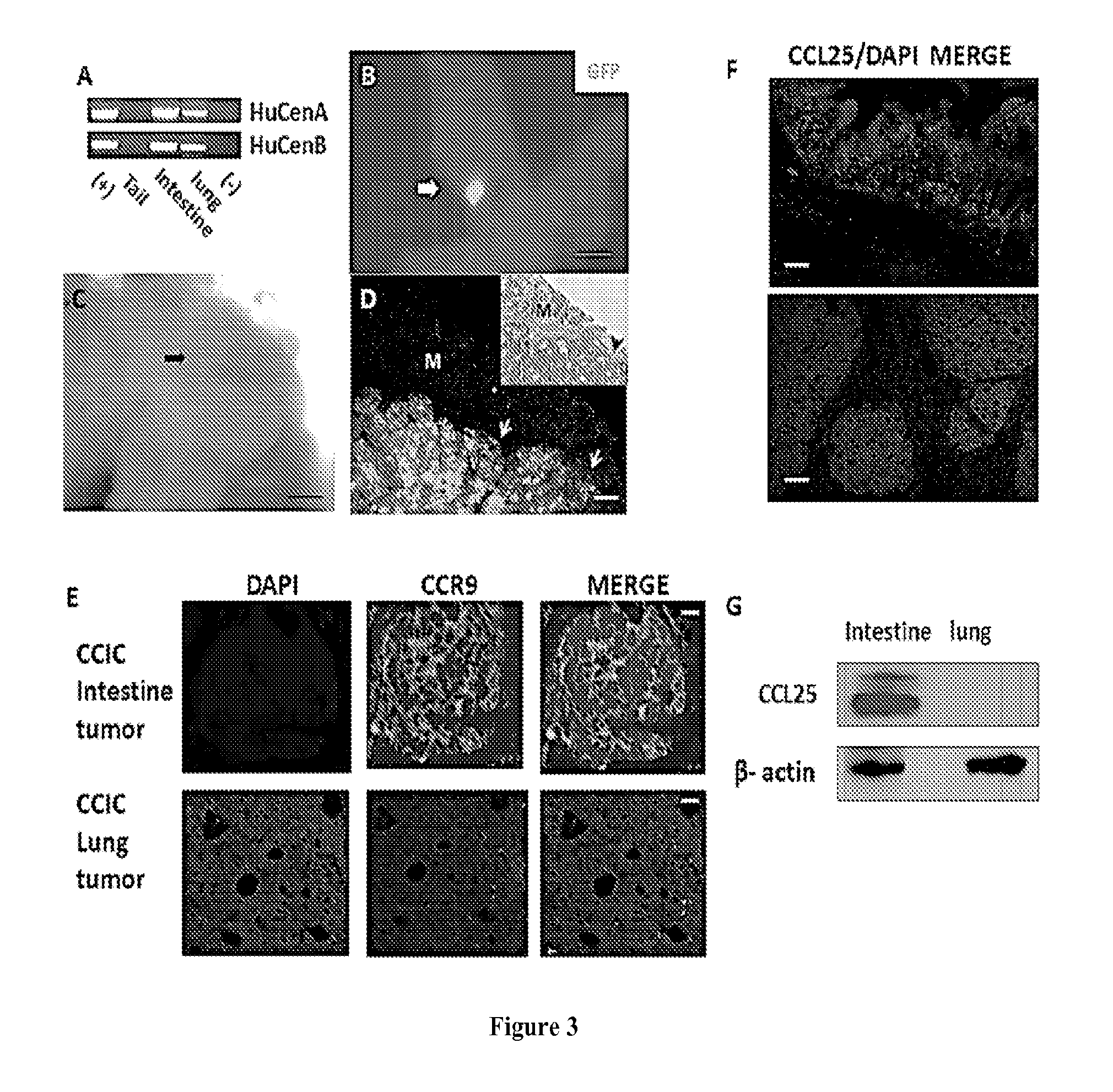Compositions and methods useful for making orthotopic tumors with controllable metastasis
a technology of orthotopic tumors and compositions, applied in the field of cancer, can solve the problems of primary orthotopic tumor metastasis, and achieve the effect of inhibiting colon cancer invasion and metastasis
- Summary
- Abstract
- Description
- Claims
- Application Information
AI Technical Summary
Benefits of technology
Problems solved by technology
Method used
Image
Examples
example 1
[0047]CCR9 is upregulated in pre-invasive CRC and downregulated in invasive and metastatic CRC. To analyze the expression pattern of CCR9 in colorectal cancer, representative sections from patient tumors were immunostained. Cases varied in clinical stage from adenoma to carcinoma in situ (Tis) to transmural involvement (T4). CCR9 staining intensity was scored for normal crypt epithelium and neoplastic tissue from each involved layer of the colon wall (FIG. 1). CCR9 is expressed in normal colonocytes essentially throughout the entire crypt. To quantify CCR9 staining intensity, a histopathology scoring system ranging from 0-3 was used. Normal colon epithelium had a mean staining intensity of 1.60±0.04, n=55. CCR9 staining in adenomatous foci was significantly increased (2.26±0.06, n=46) vs. normal tissue. In contrast, staining intensity progressively decreased in carcinoma in situ (2.03±0.08, n=19), and in carcinomas invasive into the submucosa (1.47±0.06, n=44) and muscle wall (1.13±...
PUM
| Property | Measurement | Unit |
|---|---|---|
| concentrations | aaaaa | aaaaa |
| concentrations | aaaaa | aaaaa |
| volume | aaaaa | aaaaa |
Abstract
Description
Claims
Application Information
 Login to View More
Login to View More - R&D
- Intellectual Property
- Life Sciences
- Materials
- Tech Scout
- Unparalleled Data Quality
- Higher Quality Content
- 60% Fewer Hallucinations
Browse by: Latest US Patents, China's latest patents, Technical Efficacy Thesaurus, Application Domain, Technology Topic, Popular Technical Reports.
© 2025 PatSnap. All rights reserved.Legal|Privacy policy|Modern Slavery Act Transparency Statement|Sitemap|About US| Contact US: help@patsnap.com



